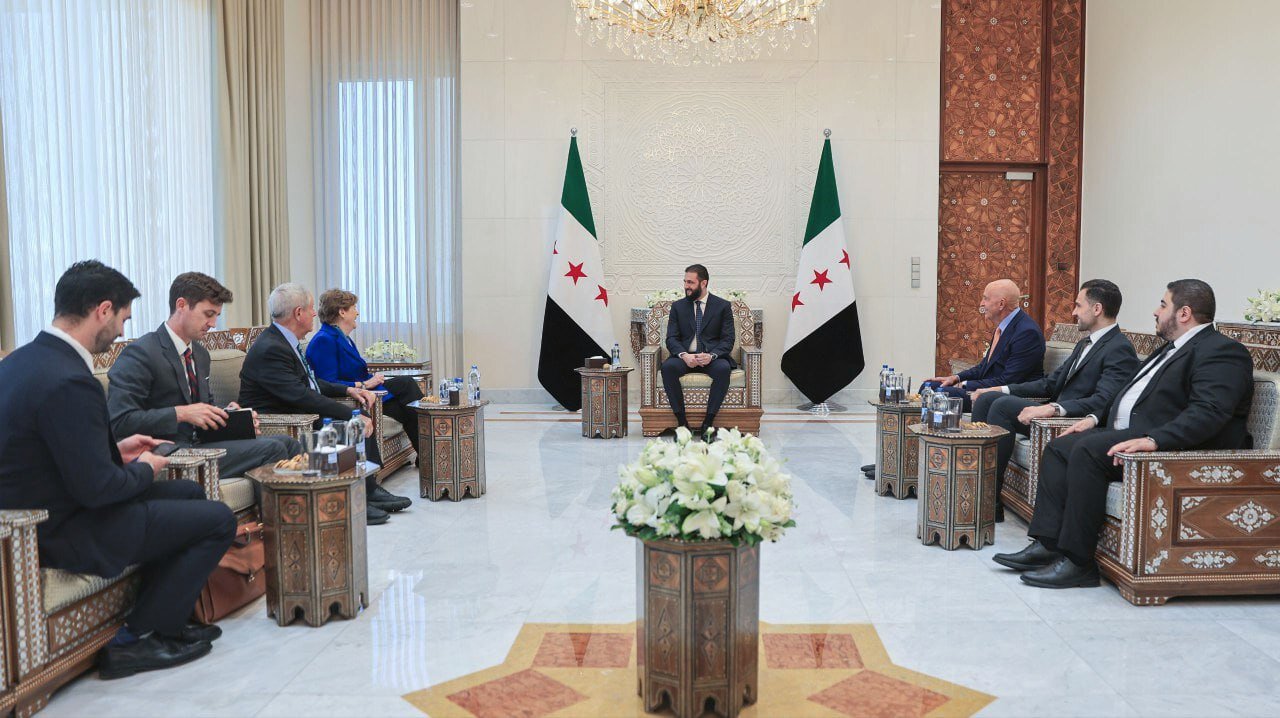Dancing with danger: Syria's pact with the Israeli devil

TEHRAN - In the treacherous theater of geopolitics in West Asia, where trust is as thin as rice paper and often folded into a sharp edge, Syria’s new leadership under Ahmed al-Sharaa — better known as Abu Muhammad al-Jolani — is edging toward a so-called security agreement with Israel.
On the surface, it is billed as a path to stability: fewer Israeli airstrikes on Damascus, supposed protections for the Druze minority, and perhaps a revival of the dusty 1974 disengagement pact. But peel back the layers, and the deal reeks of opportunism—with Israel eyeing dominance, not peace, and the United States playing the ever-eager cheerleader for Tel Aviv’s interests, masquerading as a matchmaker. When you dance with a bear, you’re the endangered party, and here Syria risks being mauled, its sovereignty clawed away under U.S. choreography.
The ink isn’t even dry, yet Israeli actions already mock the spirit of the talks. On August 25, Israeli troops fired on unarmed civilians near Beit Jinn while drones struck Quneitra. Bulldozers rolled into strategic heights, preparing what looks like a permanent base. Syrian Foreign Minister Asaad al-Shaibani blasted these moves at the OIC, warning of “expansionist and partition plans.”
And let us not overlook the Golan Heights, annexed by Israel in 1981 in defiance of international law. Israel clings to Jabal al-Sheikh (Mount Hermon), an illegally seized summit that looms over Syria like a watchtower. This is not de-escalation; it is consolidation.
From July’s bombing of Damascus to deadly clashes in Suwayda — even as negotiations were underway — Israel’s playbook has been laid bare: turn Syria into a vassal state, splintered like a Balkan puzzle, while advancing whispers of a “Greater Israel.”
Recent reports from Hebrew-language media suggest the proposed deal may include: ceasefires across multiple fronts, ousting alleged Iranian sway, bans on Syria rearming or hosting resistance groups, Druze “humanitarian corridors” granting Israel backdoor access, southern disarmament, and U.S.–Persian Gulf reconstruction funds — all hinging on Israel’s unchallenged supremacy.
Al-Sharaa admits talks are “advanced” and a deal “likely,” insisting on pre-2024 withdrawals but brushing off partition as mere “pressure.” Yet Tel Aviv’s War Minister, Israel Katz, speaking from the occupied Jabal al-Sheikh in January, vowed that Tel Aviv’s forces would remain in a “security zone” inside southern Syria for an unlimited time, mocking any notion of retreat.
The Syrian leader has signaled openness to “full peace” with Israel — if it “serves Syrian and regional interests.” Media outlets from Arab states in the Persian Gulf eagerly amplified the message, polishing his image. Western outlets have also whitewashed his past as the leader of Al Qaeda in Syria. Even Donald Trump has bizarrely praised him as a “tough guy” with a “very strong past. Fighter.”
But no amount of PR can mask what this project is: a hybrid of Oslo, Wadi Araba, and the Abraham Accords, where sovereignty is traded for security guarantees. Different names, same result — Israel’s supremacy.
Al-Sharaa insists “we have the Golan under control.” Yet his willingness to negotiate while Israeli aggression has persisted tells another story. As the proverb warns, “you can’t make a silk purse out of a sow’s ear.” No amount of diplomatic dressing can disguise a deal that betrays Arab solidarity, abandons the Palestinian cause, and leaves Gaza under siege.
The Druze angle is particularly sly—exploited as pawns to justify incursions, with corridors potentially seeding autonomy under Israeli patronage. Syrians flagged this fear to U.S. mediators, who brushed it off as unintended. But actions speak louder than words: it is an opportunistic division, eroding Syria’s unity.
The U.S. role is equally revealing. Tom Barrack, fresh from meetings with Netanyahu and his circle, jetted into Damascus with Senator Jeanne Shaheen and Congressman Joe Wilson. His declaration on X that a “united, stable, prosperous Syria requires representation by all, for all” sounded noble—but who defines the “all”? In practice, it means those who fit Israel’s design. Washington’s message to Syria is simple: unity is welcome, but only under Israeli security architecture.
For Israel, the prize is simple: security without accountability, guaranteed by neutering resistance in Palestine, Lebanon, and beyond. For the U.S., it is business as usual: putting Israel first, dictating terms to a battered region. For Syria, however, the cost is catastrophic—trading defiance for servitude, dignity for dependency.
A nation once seen as a bastion of resistance now risks becoming the enforcer of an occupier’s will. That is not peace—it is vassalage. And as the dust settles, one truth endures: “a leopard doesn’t change its spots.” Israel’s aggression will not soften because of a signature. Syria’s rightful place is not as a security subcontractor but as a sovereign nation reclaiming its soil—from Aleppo to the Golan Heights. Anything less is surrender in sheep’s clothing, a decision that generations will regret.
Leave a Comment